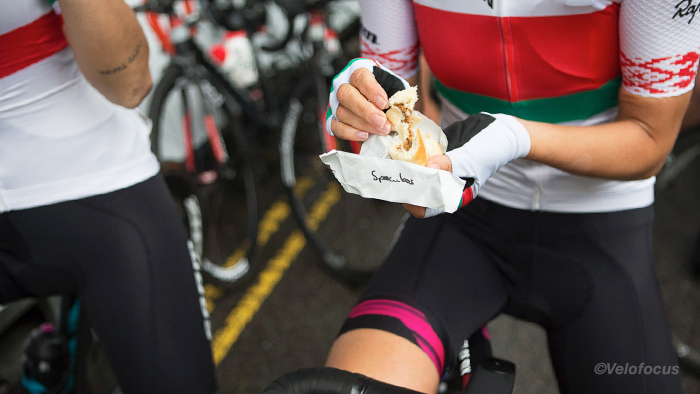Why Carbohydrate is the King for Endurance Performance

Proper nutrition is often the missing link between training and performance gains. There are a lot of nutrition philosophies out there on the topic, but in this article we’ll highlight the different types of carbohydrates and how they work to fuel your body during different activity intensities.
The Science
Carbohydrates travel quite the journey before they finally absorb into the bloodstream via the small intestines. Energy (glucose) can be stored in the liver and muscle (as glycogen) to be used as energy during exercise. Taking on carbohydrate during exercise delivers rapid energy to the working muscles and prolongs your endurance capacity. However, the effects of the energy you receive can differ drastically depending on the type of carbohydrate you use.
Different Sources
Carbohydrates come in a variety of forms. Sugars, including glucose, sucrose and fructose are all carbohydrates that you may have heard of. While they contain similar calories, they are all metabolized differently, affecting performance output. Maltodextrin, an alternative form of carbohydrate, is broken down into glucose, which is the base of SiS GO Energy products.
So what is the difference between sources of carbohydrate?
FRUCTOSE
- Must be converted into glucose in the liver before they can be metabolized
- Is oxidized at a much lower rate during exercise
- Can cause stomach issues
GLUCOSE
- Fast, readily available source of energy
- Has a higher concentration compared to maltodextrin and may require water to aid digestion in high concentrations
- Increased risk of GI distress
SUCROSE
- Also known as table sugar
- A chemical combination of glucose and fructose
- Has been shown to digest quickly
MALTODEXTRIN
- Made up of chains of glucose molecules and has a high GI, meaning that energy is available quickly
- Oxidized quickly during exercise
- Reduce the risk of developing stomach complaints during prolonged exercise
The carbohydrate source in many energy gels, including SiS GO Isotonic Energy gels, is specifically selected maltodextrin. The particular size of molecule balances the amount of energy delivered versus how quickly it empties from the stomach. This means that you will feel the performance benefits of taking on a isotonic energy gel far more quickly than when a non-isotonic gel is consumed and the risk of upsetting your stomach is much less.
Can We Combine Carbohydrate Sources?
The digestion rate of drinks containing multiple types of carbohydrate is higher than that of drinks with a single carbohydrate source. This means that, for example, drinks containing maltodextrin and fructose are less likely to cause stomach issues and can potentially deliver more energy to the muscles.
The Fat Vs. Carbohydrate Debate
There is a major split as to what should best fuel athletes. Here is a comparison:
| Fat | Carbohydrate |
|---|---|
| At low exercise intensities, you will mainly use fat as your energy source | Carbohydrate is the main fuel for high intensity exercise |
| Fat store 9kcal per gram, versus the 4 kcal that can be stored as carbohydrate | Muscle and liver glycogen stores can only last for around 90 minutes of aerobic exercise |
| Fat is oxidized much slower than glycogen, meaning that it does not supply energy rapidly | Carbohydrate, especially that of a high GI provides fast energy to be used by the working muscles |
| Fat is less available for fueling high intensity exercise | We can only absorb around 60-90g of carbohydrate per hour during exercise |
Fuel For The Work Required
By “fueling for the work required” an athlete can potentially enhance the way they use carbohydrate and fat as a fuel source during prolonged exercise. Some sessions could be performed without carbohydrate (this may even take the form of having breakfast after and not before morning training) whereas for harder effort sessions and very long endurance sessions, carbohydrate intake is essential for performance. Additionally, athletes should include “train as you race” sessions where a race day nutrition strategy is practiced. This can teach the muscles how to use both fat and carbohydrate as fuels. However, always ensure that harder training sessions are fueled to also train your gut to be able to tolerate the high carbohydrate intakes on race day.
Comments
Post a Comment